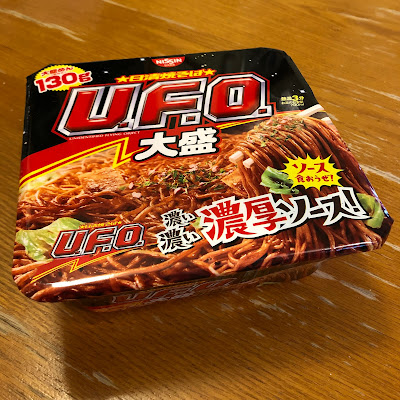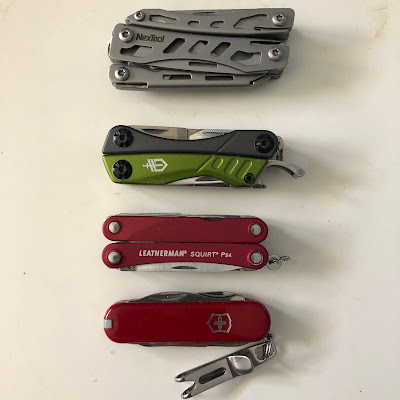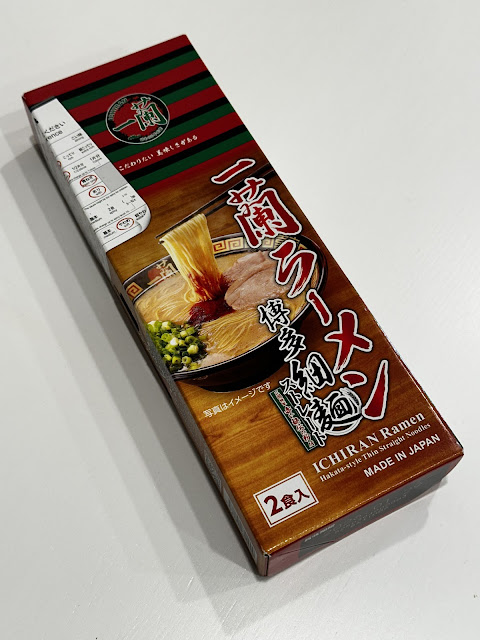Anime with a Japanese Card or Board Game Twist
Japan is one of the few countries has traditional card and board games as part of pop culture and even as a national sport. I'm not counting chess here which is international. Not only are these games actively played, they are popular anime and manga with big followings. Some of these are even rank in the best anime out there, so they have deep stories, good characters, and great artwork.
For a tourist visiting Japan, they might see these games and think they are interesting, but for some anime fans, they make great souvenirs too! A fan would want a copy of these games as a great souvenir to remember the show or even to play it with their friends to get into it. Below are four anime that feature a traditional game in some manner.
Karuta and Chihayafura
Playing cards were introduced to Japan by Portuguese traders in the 16th century. The name Karuta is derived from the Portuguese word "carta" for cards. There are many versions of Karuta, but the version that is played in the anime Chihayafura is competitive karuta based upon Uta-Garuta or poetry karuta. In this card game, there are 100 reading cards (yomifuda), each with a picture and a waka poem on it, and there are 100 white cards (torifuda) which have the last few lines of a corresponding yomifuda card on it. The poems are from the Ogura Hyakunin Isshu, a set of classical Japanese poems considered core to Japanese literature.
The torifuda are shuffled and split between two players who lay them out in front of themselves. A third person has the shuffled yomifuda and begins to read them out. The object is to swipe the matching torifuda card away to score a point. The faster you recognize the card being read allows you to swipe the matching card and you can sometimes recognize the card in one or two syllables. So the game incorporates memorization of where the cards are, sound recognition of the poem, skill and speed in swiping.
Chihayafura is about a girl, Chihaya Ayase, who meets a boy, Arata Wataya, who is a talented karuta player. A third boy, Taichi Mashima, forms a completed love triangle with the three people tied together by a love of competitive karuta. The three friends are separated, but reunited in high school where they hone their karuta skills and play in regional and national tournaments. I really enjoyed the characters navigating their relationships (sometimes obliviously), but the game drives the character development and how they face relationships, competition against oddball characters, and even overcome loss and injury. I love how lyrical it is to read out the karuta cards in this show. After March Comes in Like a Lion, this is my next favourite game related anime.
For souvenirs, you can buy relatively cheap sets of karuta cards with a cd to read the poems, but they are in Japanese usually. There are even anime themed children's karuta decks with Ponyo or My Neighbor Totoro themes.
Hanafuda and Summer Wars
Hanafuda or flower cards are another game derived from western playing cards introduced to Japan in the 16th century. When the Tokugawa Shogunate broke ties with the West, foreign cards were banned, but card games were now popular and Japanese themed decks were developed. Hanafuda was developed in the early 19th century and Nintendo (of Super Mario fame) manufactured the cards by the end of the same century. Nintendo still makes the cards and the small cards in the photo above show Hanafuda cards.
There are 48 cards in a Hanafuda deck. There are 12 suites of four cards each that represent the 12 months of the year. There are a number of ways to play the game, but they all count points, with various values given the the individual cards or sets of cards. Koi-Koi is one of the more popular games and it was featured in the anime movie, Summer War.
Summer Wars is a movie produced by Mamoru Hosoda is about technology, family ties, and the values that hold us together. The heroine, Natsuki Shinohara, battles it out with a malicious AI named Love Machine in an epic game of Koi-Koi to regain control of a worldwide virtual world called OZ. This is a great movie that has plenty of action scenes, a well imagined online universe, and plenty of Japanese culture both modern and traditional. It is just loads of fun to watch this well animated and colorful film.
For souvenirs, you can buy sets of Hanafuda cards manufactured by Nintendo. They have more expensive Napoleon decks, and anime themed decks with Mario, Spirited Away, and even Pokemon. These picture cards make awesome souvenirs, and there are many sources of rules online that show you how to play the game.
Shogi and March Comes in Like a Lion
Shogi is also known as Japanese Chess and it has been played in its current form since the 16th century, but it is an even older game. This game is played on a 9 x 9 grid with two matching armies facing off. Each player has 20 pentagonal wedge shaped pieces including a king, generals, knights, rook, bishops, lances, and pawns. The pieces have their name written on them in kanji, and do not have pictures. It is a fairly complex game like western chess, with a great deal of strategy, and the object of the game is to checkmate the opposing king.
The game is the core driving mechanic in the anime series March Comes in Like a Lion. The protagonist, Rei Kiriyama, is an orphan who structures his life around the game as his adopting family is not a happy one. The series centers on this high school student who meets new friends, rises in the ranks of the national Shogi association, and has grueling training and matches with fierce competitors. I enjoyed seeing how his character grows along with the exciting Shogi matches he plays in (even if I still don't know how to play the game, but I'll figure it out one day). The character ensemble and stories in this show are top notch. I really like the Kawamoto sisters too, who start his journey to open himself up to new friends.
This is actually one of my favourite anime series as I just like all the characters. It is just a really well written drama series without a single superpower or mecha in it. I'd buy it, but the expensive Aniplex sets in North America are holding me off.
You can buy Shogi games in stores over there in travel sizes and full sizes, but there are Shogi rule books and sets you can buy in English.
Go and Hikaru No Go
Go is an old board game that originated in China more than two millenia ago with more than 46 million players around the world. It has been played in Japan since the 7th century so it has become part of the cultural framework. The game is played on a 19 x 19 grid with white and black stones where the object is to control the board and capture your opponent's stones. The person who has the most territory at the end of the game wins.
This is an older manga (running in Shonen Jump from 1999 to 2003) and it was adapted into a 75 episode anime series (aired from 2001 to 2003). The hero, Hikaru, meets the spirit of Fujiwara-no-Sai, a Go master from the Heian period. Through the spirit, Hikaru develops and interest in the game and gets progressively better to eventually enter the international Hokuto cup.
I've never seen the anime, but read many of the earlier chapters when they were translated into English via the print edition of the North American Shonen Jump magazine. I enjoyed the series, but the series I highlighted first were more enjoyable to me.
You can get Go boards almost anywhere, but it is a popular game in Japan. I've played othello, but never the much more complex Go game.
*****
There are many other great game-based anime out there too, even Mahjong anime like Saki, so get watching and buy some souvenirs! On a side note, it seems like contact between cultures is pretty dynamic as you can tell from how these games developed. See the world, play the game.
Follow me on Twitter a @Tostzilla or my feedburner for this blog.
More Japanese pop culture posts here.
More Anime posts here.
For a tourist visiting Japan, they might see these games and think they are interesting, but for some anime fans, they make great souvenirs too! A fan would want a copy of these games as a great souvenir to remember the show or even to play it with their friends to get into it. Below are four anime that feature a traditional game in some manner.
 |
| Smaller Hanafuda cards with the larger cards being Karuta cards. |
Karuta and Chihayafura
Playing cards were introduced to Japan by Portuguese traders in the 16th century. The name Karuta is derived from the Portuguese word "carta" for cards. There are many versions of Karuta, but the version that is played in the anime Chihayafura is competitive karuta based upon Uta-Garuta or poetry karuta. In this card game, there are 100 reading cards (yomifuda), each with a picture and a waka poem on it, and there are 100 white cards (torifuda) which have the last few lines of a corresponding yomifuda card on it. The poems are from the Ogura Hyakunin Isshu, a set of classical Japanese poems considered core to Japanese literature.
The torifuda are shuffled and split between two players who lay them out in front of themselves. A third person has the shuffled yomifuda and begins to read them out. The object is to swipe the matching torifuda card away to score a point. The faster you recognize the card being read allows you to swipe the matching card and you can sometimes recognize the card in one or two syllables. So the game incorporates memorization of where the cards are, sound recognition of the poem, skill and speed in swiping.
Chihayafura is about a girl, Chihaya Ayase, who meets a boy, Arata Wataya, who is a talented karuta player. A third boy, Taichi Mashima, forms a completed love triangle with the three people tied together by a love of competitive karuta. The three friends are separated, but reunited in high school where they hone their karuta skills and play in regional and national tournaments. I really enjoyed the characters navigating their relationships (sometimes obliviously), but the game drives the character development and how they face relationships, competition against oddball characters, and even overcome loss and injury. I love how lyrical it is to read out the karuta cards in this show. After March Comes in Like a Lion, this is my next favourite game related anime.
For souvenirs, you can buy relatively cheap sets of karuta cards with a cd to read the poems, but they are in Japanese usually. There are even anime themed children's karuta decks with Ponyo or My Neighbor Totoro themes.
Hanafuda and Summer Wars
Hanafuda or flower cards are another game derived from western playing cards introduced to Japan in the 16th century. When the Tokugawa Shogunate broke ties with the West, foreign cards were banned, but card games were now popular and Japanese themed decks were developed. Hanafuda was developed in the early 19th century and Nintendo (of Super Mario fame) manufactured the cards by the end of the same century. Nintendo still makes the cards and the small cards in the photo above show Hanafuda cards.
There are 48 cards in a Hanafuda deck. There are 12 suites of four cards each that represent the 12 months of the year. There are a number of ways to play the game, but they all count points, with various values given the the individual cards or sets of cards. Koi-Koi is one of the more popular games and it was featured in the anime movie, Summer War.
Summer Wars is a movie produced by Mamoru Hosoda is about technology, family ties, and the values that hold us together. The heroine, Natsuki Shinohara, battles it out with a malicious AI named Love Machine in an epic game of Koi-Koi to regain control of a worldwide virtual world called OZ. This is a great movie that has plenty of action scenes, a well imagined online universe, and plenty of Japanese culture both modern and traditional. It is just loads of fun to watch this well animated and colorful film.
For souvenirs, you can buy sets of Hanafuda cards manufactured by Nintendo. They have more expensive Napoleon decks, and anime themed decks with Mario, Spirited Away, and even Pokemon. These picture cards make awesome souvenirs, and there are many sources of rules online that show you how to play the game.
Shogi and March Comes in Like a Lion
Shogi is also known as Japanese Chess and it has been played in its current form since the 16th century, but it is an even older game. This game is played on a 9 x 9 grid with two matching armies facing off. Each player has 20 pentagonal wedge shaped pieces including a king, generals, knights, rook, bishops, lances, and pawns. The pieces have their name written on them in kanji, and do not have pictures. It is a fairly complex game like western chess, with a great deal of strategy, and the object of the game is to checkmate the opposing king.
The game is the core driving mechanic in the anime series March Comes in Like a Lion. The protagonist, Rei Kiriyama, is an orphan who structures his life around the game as his adopting family is not a happy one. The series centers on this high school student who meets new friends, rises in the ranks of the national Shogi association, and has grueling training and matches with fierce competitors. I enjoyed seeing how his character grows along with the exciting Shogi matches he plays in (even if I still don't know how to play the game, but I'll figure it out one day). The character ensemble and stories in this show are top notch. I really like the Kawamoto sisters too, who start his journey to open himself up to new friends.
This is actually one of my favourite anime series as I just like all the characters. It is just a really well written drama series without a single superpower or mecha in it. I'd buy it, but the expensive Aniplex sets in North America are holding me off.
You can buy Shogi games in stores over there in travel sizes and full sizes, but there are Shogi rule books and sets you can buy in English.
Go and Hikaru No Go
Go is an old board game that originated in China more than two millenia ago with more than 46 million players around the world. It has been played in Japan since the 7th century so it has become part of the cultural framework. The game is played on a 19 x 19 grid with white and black stones where the object is to control the board and capture your opponent's stones. The person who has the most territory at the end of the game wins.
This is an older manga (running in Shonen Jump from 1999 to 2003) and it was adapted into a 75 episode anime series (aired from 2001 to 2003). The hero, Hikaru, meets the spirit of Fujiwara-no-Sai, a Go master from the Heian period. Through the spirit, Hikaru develops and interest in the game and gets progressively better to eventually enter the international Hokuto cup.
I've never seen the anime, but read many of the earlier chapters when they were translated into English via the print edition of the North American Shonen Jump magazine. I enjoyed the series, but the series I highlighted first were more enjoyable to me.
You can get Go boards almost anywhere, but it is a popular game in Japan. I've played othello, but never the much more complex Go game.
*****
There are many other great game-based anime out there too, even Mahjong anime like Saki, so get watching and buy some souvenirs! On a side note, it seems like contact between cultures is pretty dynamic as you can tell from how these games developed. See the world, play the game.
Follow me on Twitter a @Tostzilla or my feedburner for this blog.
More Japanese pop culture posts here.
More Anime posts here.











Comments
Post a Comment